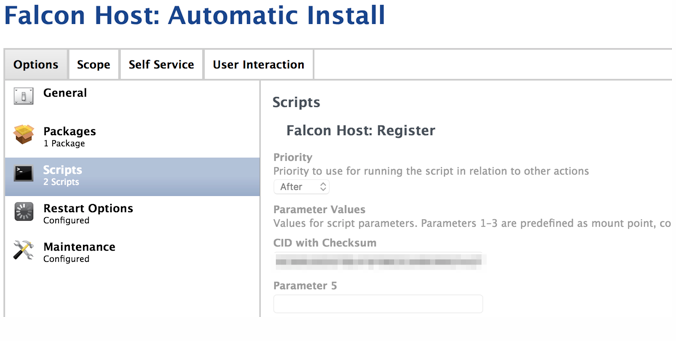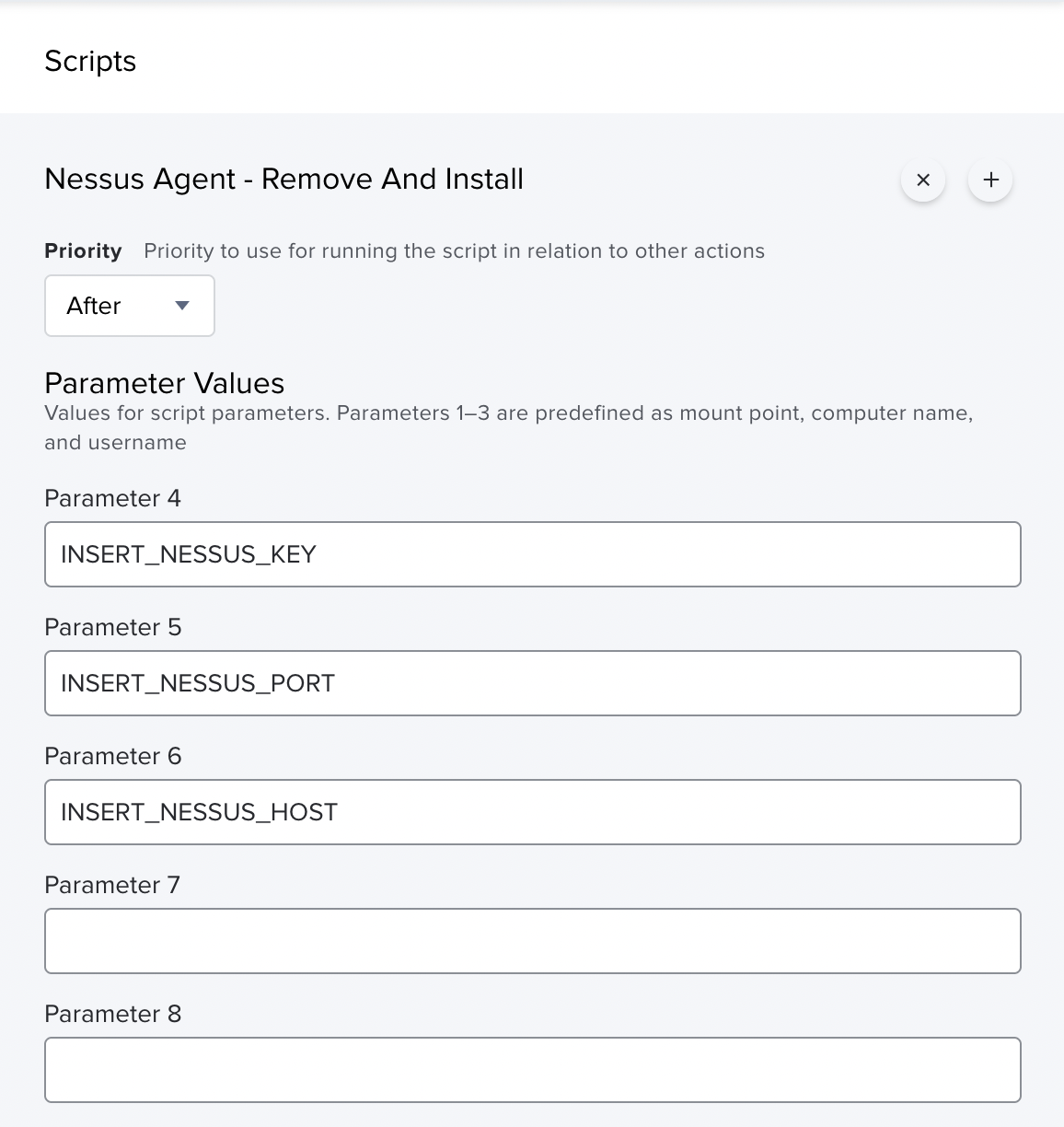

- #Jamf run script update#
- #Jamf run script pro#
- #Jamf run script password#
- #Jamf run script series#
- #Jamf run script mac#
#Jamf run script pro#
The main advantage a script has is that it's easier to test for conditions to make sure commands aren't being run unnecessarily.īut either way should work, generally speaking. Jamf Pro Scripts Scripts I use to customize systems with parameters and API access.
#Jamf run script series#
That tells the policy to run that command, or a series of them, after all other actions in the policy, like installing the application, have completed.Īnother way is to create a script that would run that command, and add it to the same policy under Scripts, run as "After". One simple way would be to take the exact line you have above there (but maybe with a file extension added?) and drop it into the Files and Processes payload's Execute Command line. Terminal is really just a tool for interacting with the shell, but in most cases you don't want to have Terminal come up to run anything since it's unnecessary and distracting.įor your use case, you could handle it a couple of different ways.

You can run the script command in the shell. For us, we're using this script to set the value of "Smelly" as "Smells very bad.You don't usually make scripts run "in the Terminal" when talking about either silent deployments, or something run in Self Service, etc.

This adds a layer of abstraction to your username/password string so it will require at least some effort for someone to determine what those credentials are besides just displaying them in plain text on your Jamf Pro server. You'll get output in a long string, and that should be placed in Parameter 5 on your policy.
#Jamf run script password#
To do this format your credentials as apiuser:apipassword (meaning a username and password smooshed together with a colon in the middle of an actual user account that can write with the API, I very much hope it's not apiuser with apipassword as a password lol) and run through the terminal with echo -n 'apiuser:apipassword' | openssl base64. Encoded credentials - take the username and password of your api account and use openssl to convert them into a base64 string.Jamf Pro Server URL - the URL of your Jamf server, such as.Parameter 4 - Jamf Pro Server URL (no port).When you add the above template script to a Jamf server, take the time to label the parameters so that when it's used in a policy later it'll be easy to remember what information you need to provide for the script to work.
#Jamf run script update#
I've made a template script that uses parameters set on a policy to update an EA using the API to make this relatively painless to do. If you want want to make this a little more user-friendly, you can make a Self Service policy that runs a script that updates this value using the API. A script is a collection of commands in a single file to be run in. Once created you can find that pop-up menu in whatever tab of a computer record you specified (above, "General") and change the value. Scripts can be used to automate system processes and extend the functionality of Jamf Pro. Ive an AppleScript app that mounts drives & printers depending on.
#Jamf run script mac#
(Maybe you can?) So you make a pop-up menu EA for techs to mark if a Mac smells on the computer record in Jamf Pro. Depending on what youre trying to achieve you could run a launch agent, that calls a script. through a Javascript script that runs on CICs (powered by Auth0) server on. You can't really write a script to pull smell status off of a Mac. through solutions such as VMWare AirWatch, MobileIron, Intune, or JAMF. So let's say the help desk staff notices that some Macs that come by are really smelly. One of the handiest ways to set info ad hoc is with a pop-up menu extension attribute. Other times you just need to set a simple value for a Mac on demand for reporting purposes. Sometimes you want to snag information off of a client Mac, and for that a small script to grab the info and report it up to the Jamf Pro Server is great. Not all extension attributes (EAs) are created equally.


 0 kommentar(er)
0 kommentar(er)
